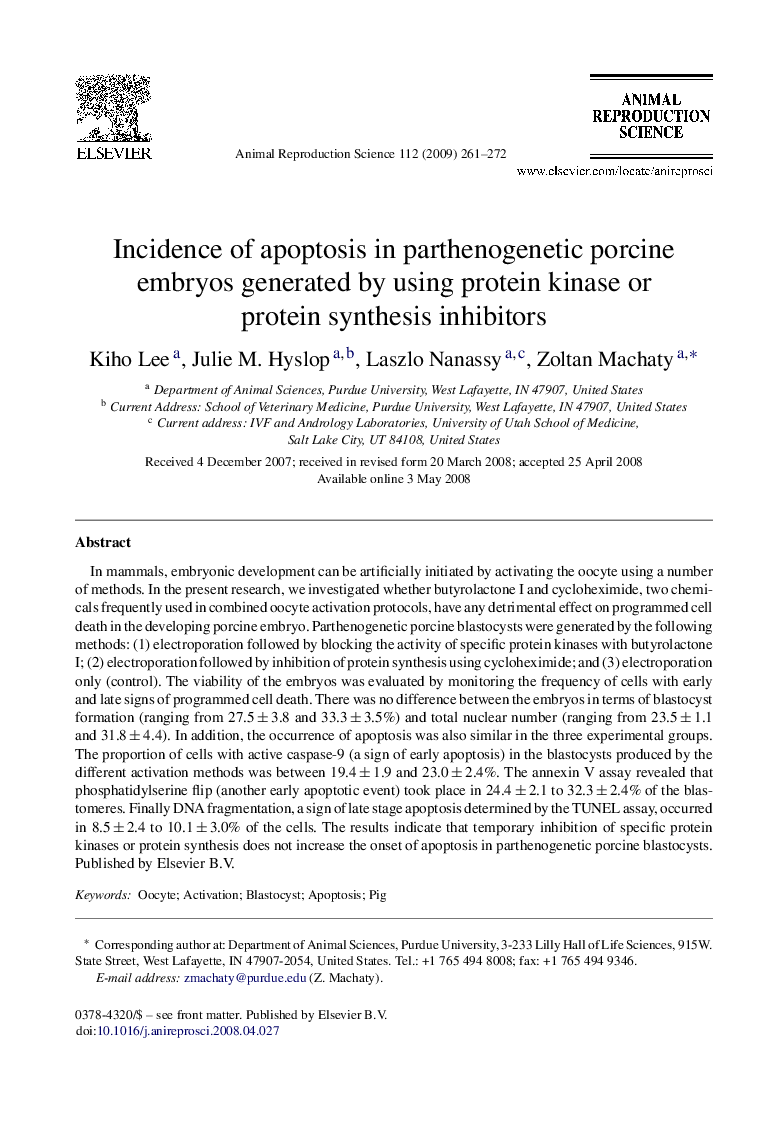| Article ID | Journal | Published Year | Pages | File Type |
|---|---|---|---|---|
| 2074239 | Animal Reproduction Science | 2009 | 12 Pages |
In mammals, embryonic development can be artificially initiated by activating the oocyte using a number of methods. In the present research, we investigated whether butyrolactone I and cycloheximide, two chemicals frequently used in combined oocyte activation protocols, have any detrimental effect on programmed cell death in the developing porcine embryo. Parthenogenetic porcine blastocysts were generated by the following methods: (1) electroporation followed by blocking the activity of specific protein kinases with butyrolactone I; (2) electroporation followed by inhibition of protein synthesis using cycloheximide; and (3) electroporation only (control). The viability of the embryos was evaluated by monitoring the frequency of cells with early and late signs of programmed cell death. There was no difference between the embryos in terms of blastocyst formation (ranging from 27.5 ± 3.8 and 33.3 ± 3.5%) and total nuclear number (ranging from 23.5 ± 1.1 and 31.8 ± 4.4). In addition, the occurrence of apoptosis was also similar in the three experimental groups. The proportion of cells with active caspase-9 (a sign of early apoptosis) in the blastocysts produced by the different activation methods was between 19.4 ± 1.9 and 23.0 ± 2.4%. The annexin V assay revealed that phosphatidylserine flip (another early apoptotic event) took place in 24.4 ± 2.1 to 32.3 ± 2.4% of the blastomeres. Finally DNA fragmentation, a sign of late stage apoptosis determined by the TUNEL assay, occurred in 8.5 ± 2.4 to 10.1 ± 3.0% of the cells. The results indicate that temporary inhibition of specific protein kinases or protein synthesis does not increase the onset of apoptosis in parthenogenetic porcine blastocysts.
